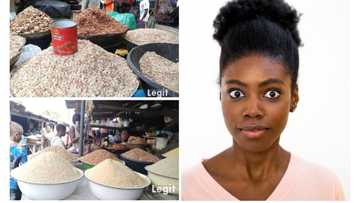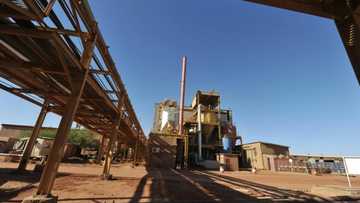Legit.ng Weekly Price Check: Top 6 Goods Whose Cost Price Increased in Lagos Market This 2022 and Why
- A lot of happenings in the year 2022, shaped the availability and cost price of goods in major markets across the country
- Nigerians witnessed like never before the unprecedented rise in teh cost price of major goods such as rice, beans, yam, and vegetable oil, to mention but a few
- This development however informed the drop in the profit of buyers and low purchasing power of buyers in recent times
PAY ATTENTION: Click “See First” under the “Following” tab to see Legit.ng News on your Facebook News Feed!
In the year 2022, the market environment witnessed a change in its activities with regard to food prices and availability.
Like never before there was a major rise in the cost price of major goods in the market and this led to lamentation on the part of the buyers and even traders.
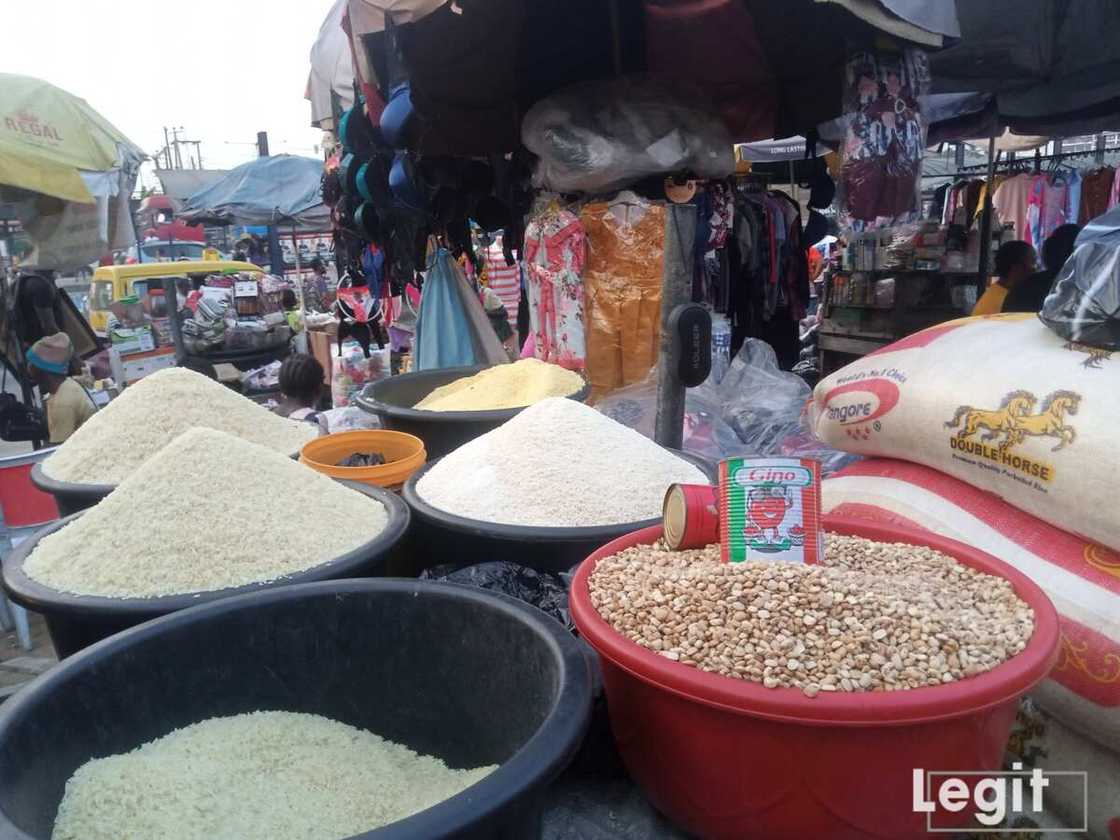
Source: Original
For basic food items, there was an increment of about 60% to 80% and this was not even the main issue of the buyers, rather most lament the difficulty they passed through in getting the food items.
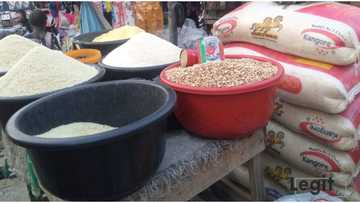
Read also
Legit.ng weekly price check: Lagos trader reveals real reason why bag of rice now sells for N39,000
As we wind up to the end of the year, Legit.ng compiled a list of food items whose cost price increased beyond traders' imagination;
1. Rice
2. Beans
3. Ogbono
4. Egusi
5. Yam
6. Vegetable oil and Palm Oil
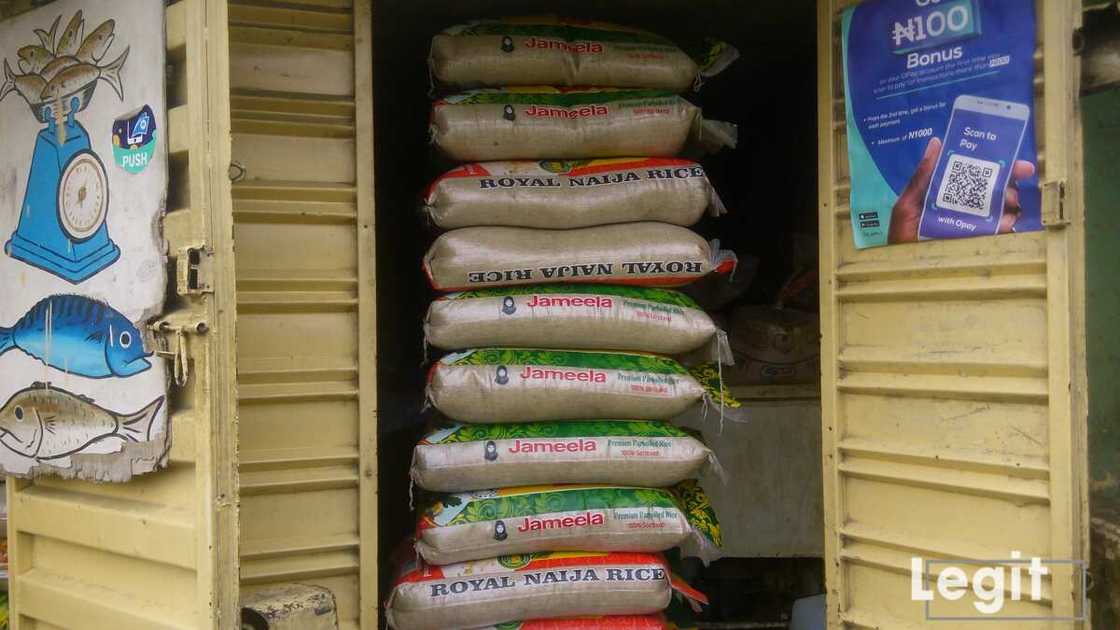
Source: Original
1. Rice
The cost price of rice increased in the year 2022 beyond the wildest imaginations of many. This is not only experienced in Lagos market, as major states in the country were hit as well.
In the first quarter of teh year, there was a gradual rise in teh cost price of rice especially the imported rice betetr known as foreign rice.
But in the second quarter it increased from N25,000 to N29,000 upwards while in the third quarter a bag of rice sells from N30, 000 upwards to N35,000 and then in teh month of October, it increased from N35,000 through N40,000 and from N40,000 through N45,000 upwards. This led to further lamentations in the country.
As of now, a bag of rice sells from N39,000 and N41,000 upwards, in popular major markets across Lagos state.
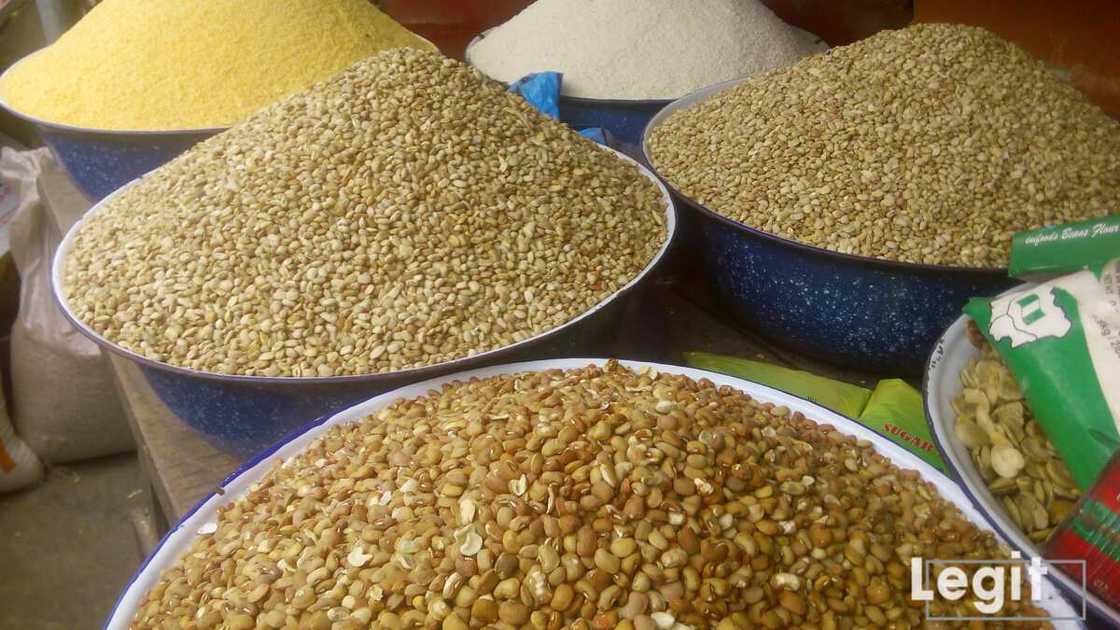
Source: Original
2. Beans
This year, the cost price of beans increased drastically and the cost of purchase on the part of traders was doubled.
In fact, the product was available in major markets across the state yet it became an expensive item even for the common man to afford.
A bag of beans this year was sold from N65,000, N70,000, and N80,000 upwards depending on its size, the content of the bag and the type of beans.
For Oloyin beans, a small bag costs N40,000 as against its old price of N30,000 and below.
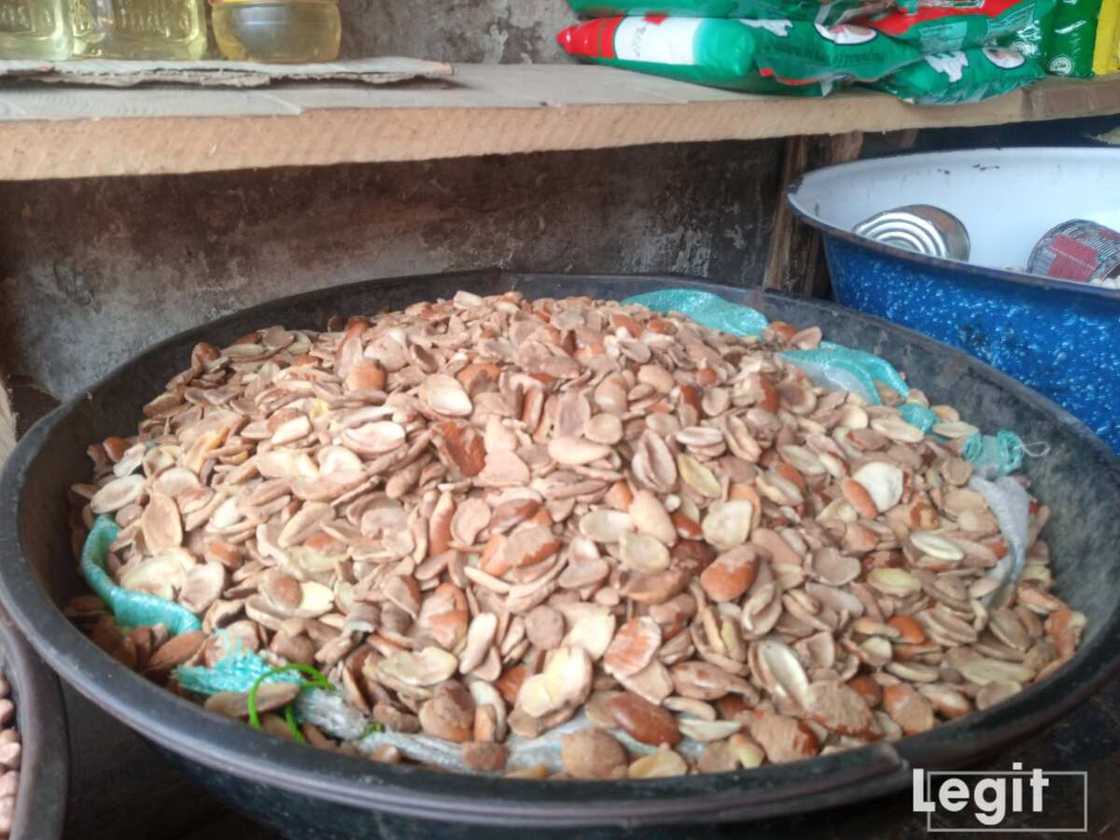
Source: Original
3. Ogbono
Foodstuff dealers are also not left out of the happenings in the market.
In fact, their lamentation was on another level considering the exorbitant price they pay for goods such as Ogbiono, egusi, dry pepper and crayfish.

Read also
How banks, telcos, fintechs will benefit from new CBN cash withdrawal limit policy, experts speak
This year, the cost price of Ogbono increased from N120,000 to N200,000 and above.
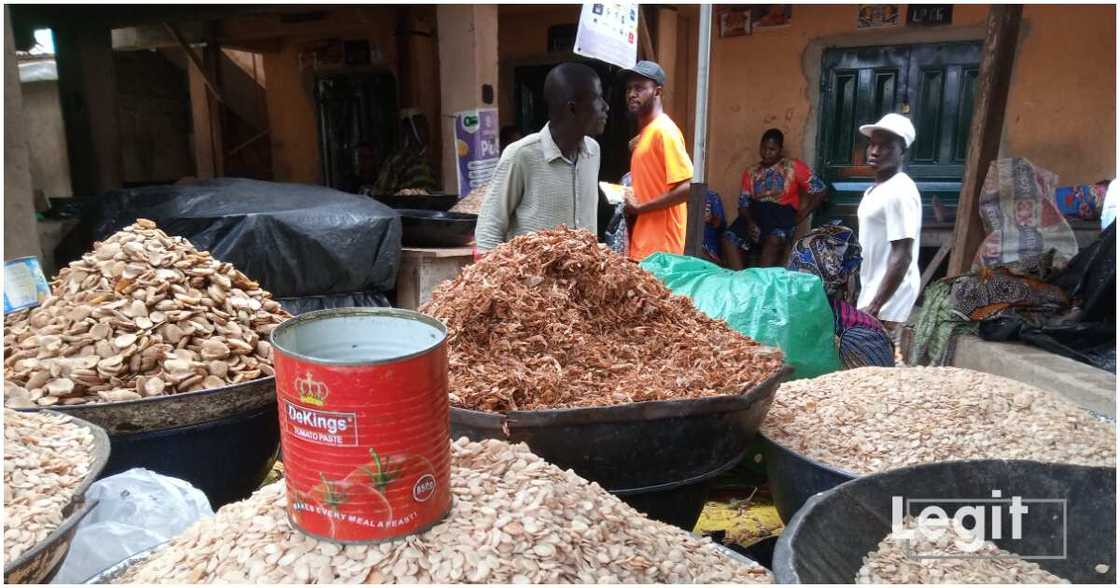
Source: Original
4. Egusi
Egusi is one food item in Lagos market whose cost price was offered at a reasonable rate. But in the year 2022, there was a drastic increment in the cost price of egusi, one foodstuff item whose demand is on the high side.
This year, a bag of egusi was sold from N160, 000 and N180,000, a development many traders described as shocking.

Source: Original
5. Yam
This list is incomplete without the mention of Yam.
This is one major product that is not imported rather it is grown in Nigeria, yet it is very expensive.
This year, the cost price of yam did not only rise but at some point, it became a scarce commodity, and some traders, especially in Lagos market, had to venture into other businesses as the supply was very low and when it is available the cost of purchase is very high.
To date, the cost price of yam is very high and a tuber of yam small size is sold from N1,000 and big size from N2,000 and N3,000 upwards, for yams that taste good, especially, the Abuja yam.
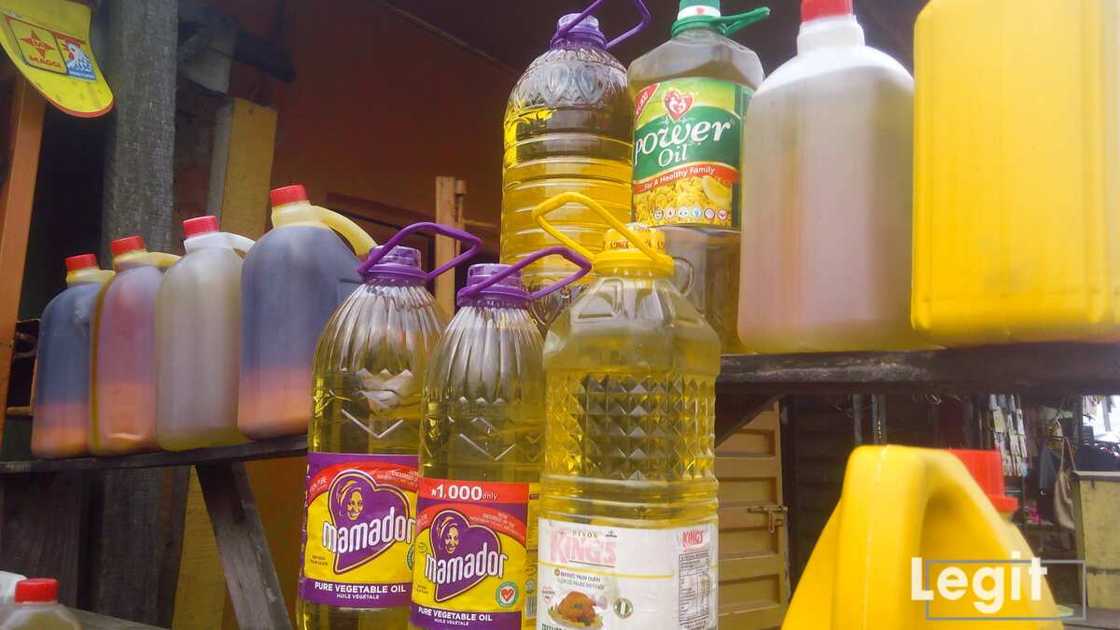
Source: Original
6. Vegetable oil and palm-oil
Palm oil and groundnut oil are items whose cost price increased this year.
A 25-litre of palm-oil was sold from N18,000 upwards while N25-litre of vegetable oil was sold from N23,000 upwards.
Interestingly, palm-oil is not an imported item rather it was very expensive while vegetable oil, an imported item, and some brands manufacturing in Nigeria offer theirs at exorbitant prices.
At the moment, Vegetable-oil in some markets is sold from N32,000 upwards while palm-oil is sold from N27,000 and below.
Why the goods were expensive
The major reason why the items mentioned above were expensive is highlighted below;
1. Insecurity
One sad development that has affected not only Nigerians but the nation's economy is the rising insecurity.
The continuous attack on farmlands, abduction of farmers and killings of their beloved ones in major states where these items are grown, led to their hike in cost price.
In fact, the Nigerian government has continued its battle against the rising insecurity in the country, an issue that has become a pain in the neck of most governors.
2. The grappling economy
The nation's economy which has gone from bad to worse under the President Muhammadu Buhari-Osinbajo-led administration is one huge factor that informed food prices in 2022.
In fact, the economy has affected every sector of the polity due to the policies of the federal government, the Central Bank of Nigeria (CBN)'s policies that are affecting the nation's currency Naira and so on.
3. Border closure
The nation's land border closure led to a large extent the hike in the cost price of goods like imported rice, vegetable oil and ogbono.
Other goods affected by this development are frozen foods such as Turkey, chicken and frozen fish. These items have become very expensive and beyond the reach of the regular Nigerians.
Despite the fact the government opened some of its land borders this year, the items have maintained their increment.
4. Flooding
The recent flooding in major states across Nigeria affected not only the availability of food items but their cost price.
In states like Bayelsa and Kogi, food prices became gold for the common man as they offered for sale to those who can afford it. Food items were scarce and the floods resulted in an increased humanitarian impact.
5. Seasonal factors
Seasonal factors also played a huge role in the cost price of goods in the year 2022 and would be so even after.
Most goods when in season, are offered at reasonable prices and when they are not in season, they are sold at exorbitant prices.
This would also determine their supply level in the markets visited by buyers.
6. Market location
In various states across Nigeria, the market visited often determines the affordability of items.
The major markets which are termed the popular markets offer goods at wholesale prices while the retail markets offer goods at retail prices.
So, the market visited contributes to how affordable or expensive the goods will be offered.
7. Hike in transportation fare
The cost price of transportation due to the hike in fuel price led to the increment in the cost of goods, especially in Lagos market.
Due to the rising insecurity in the land, the transportation of goods from neighbouring states outside Lagos was a huge task and expensive as well.
This development according to most traders in Lagos market informs food prices.
Important note
It would be interesting to note that other goods also increased in major markets across the country but not as expensive as the ones highlighted above.
Legit.ng weekly price check: Lagos trader reveals real reason why bag of rice now sells for N39,000
It's a few days to the Christmas and New Year celebrations, in Lagos and across the globe.
While some are preparing big for the holidays, others are lamenting regarding the whole event which made up their lives in the year 2022.
The year according to the traders in a popular Lagos market has not been very rosy but they are grateful for Life which signifies better days are indeed ahead, as they expressed hope for what would determine their fate in the New Year.
Legit.ng weekly price check: “Nigeria inflation rate terribly affecting us”, Yam seller in popular Lagos market groan
Yam sellers are not having a filled day in Lagos market as the cost price of the produce rises.
Despite the fact that yam is in its season this period, the cost of its purchase is on the high side and traders are not happy.
The market this week is dull and dry, shops that are operating are not having a swell time as buyers are not trooping in and out as they ought to.
Source: Legit.ng




